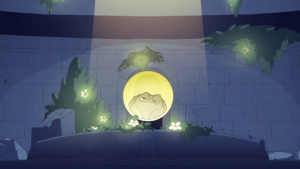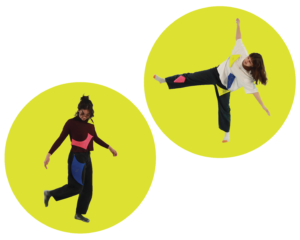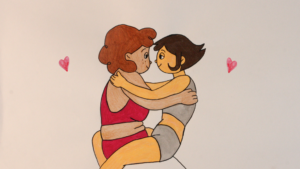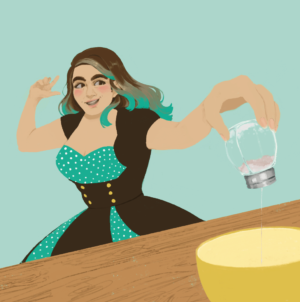MAP (of sorts)
Aretha Pereira
See it On Campus: Level 2
Visitor InfoAward Recipient
- John C. Kerr Chancellor Emeritus Awards for Excellence in Visual Arts – Honourable Mention
- Opus Art Supplies Graduation Award BFA
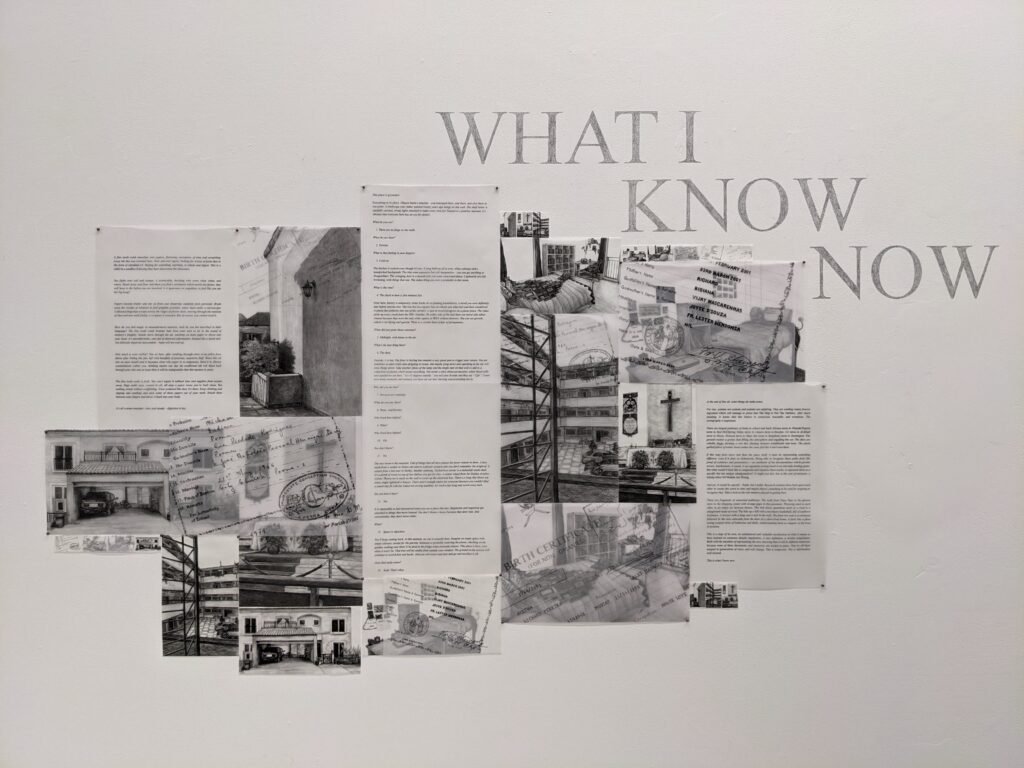
Map (of sorts) begins to outline my identity across conditional categories defined by personal histories. The work is divided into three parts: essays, documents, and memories. The former is presented as text while the latter two manifest as illustrations depicting houses, paperwork, cities, and spaces which represent communities and cultures I am connected to alongside ones which regulate my inclusion. Everything is printed on vellum and overlaid to obscure content and blur their relationships with each other, acting as a veil I found myself dealing with when sorting through the various forms of documentation and information about myself. Altogether, the work investigates how identity is authorized and understood by portraying the intersections of my own past and timeline alongside my reflections on such. Philippe Artières, a historian, writes “These are archives because I found them in a particular place. […] There is someone who, at a given moment, put them there” – I have put this together to show What I Know Now about how I exist between borders, people, and places.
This project came out of an eagerness to research my own past and ancestry. I wanted to better understand how my family and I have been influenced by the communities, systems, and countries we’ve navigated both legally and culturally. Growing up between the Middle East and East Africa, my idea of home was quite disconnected from my own culture, but the weight of both were constantly put into question. In 2019, I moved to North America for university and was met with new assumptions and questions about my identity – how people perceived me based on the places I’d lived, culture, colour, race, and accent felt entirely out of my hands. It suddenly seemed like every fact about myself contradicted another – not being able to come to an “identity conclusion” after explaining my entire history felt like continually failing to honestly represent all facets of who I am.
This frustration led me to researching themes of diaspora, nations, borderlands, and legality (information and my ideas shift in this process, but you can read what I’ve found so far here.) I applied this to my own history to analyze key moments and memories which led me to illustrating these snapshots. Altogether, this became one iteration of the aforementioned facts that define me. The way they fit together is specific but malleable, and will continue to change as I learn more.
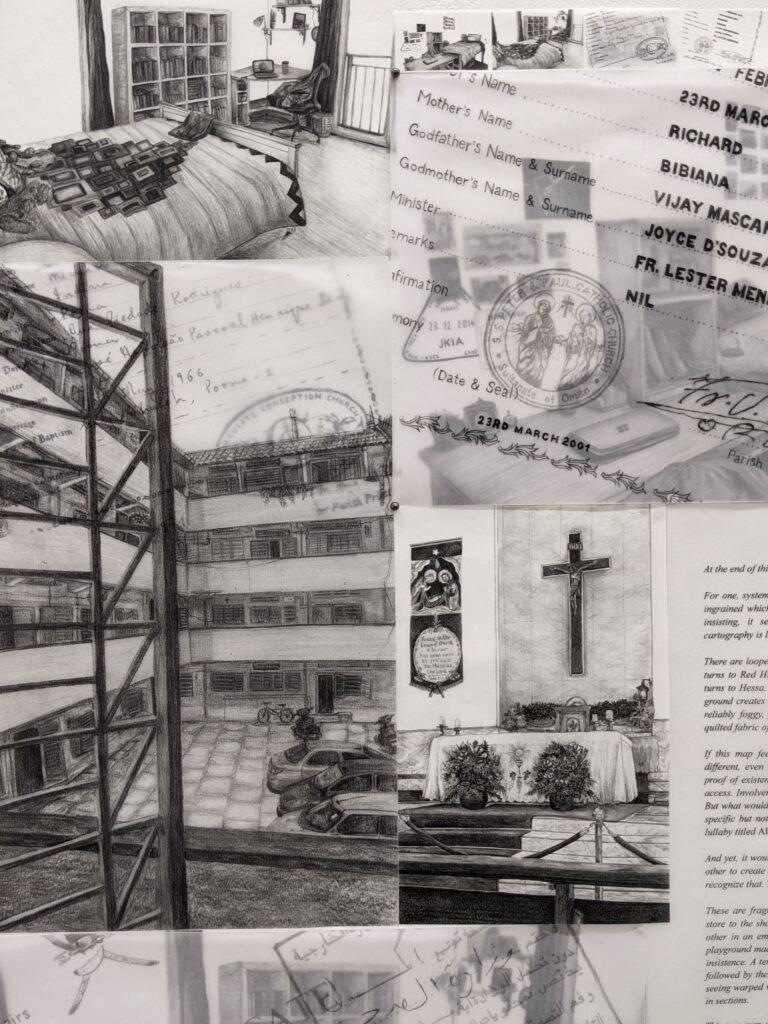
A possible epigraph for this project could be taken from the book A Map To The Door Of No Return, by Dionne Brand which regards this process as “… relying on random shards of history and unwritten memoir of descendants of those who passed through it […], I am constructing a map of the region, paying attention to faces, to the unknowable, to unintended acts of returning, to impressions of doorways. Any act of recollection is important, even looks of dismay and discomfort. Any wisp of a dream is evidence” (13).
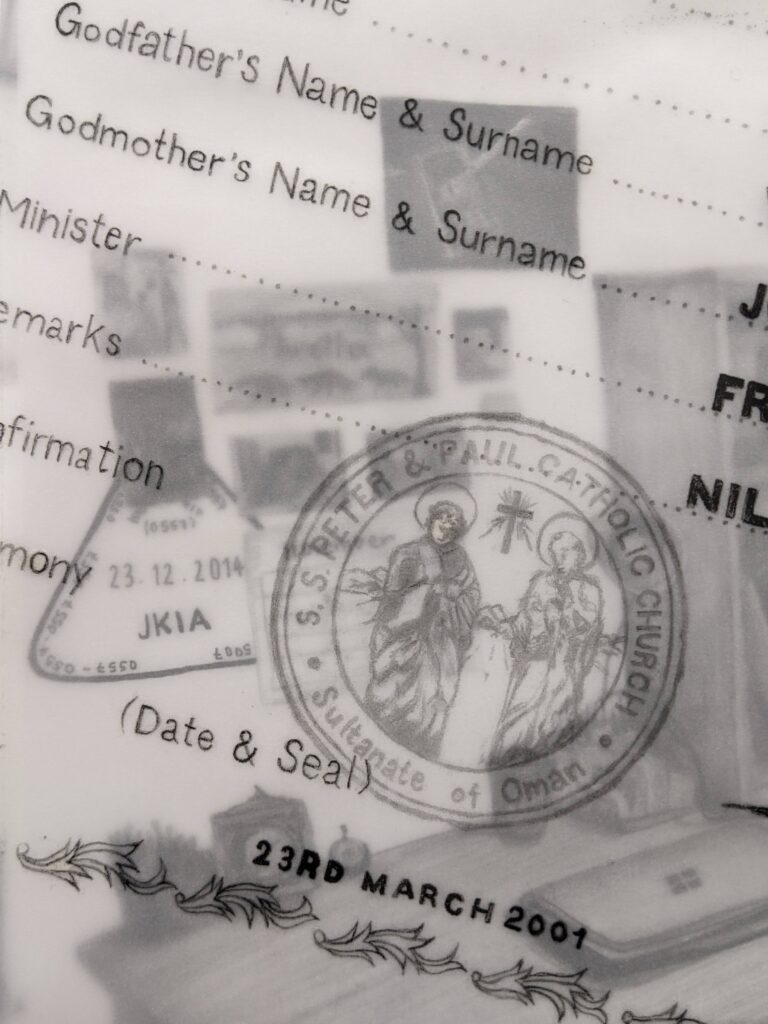
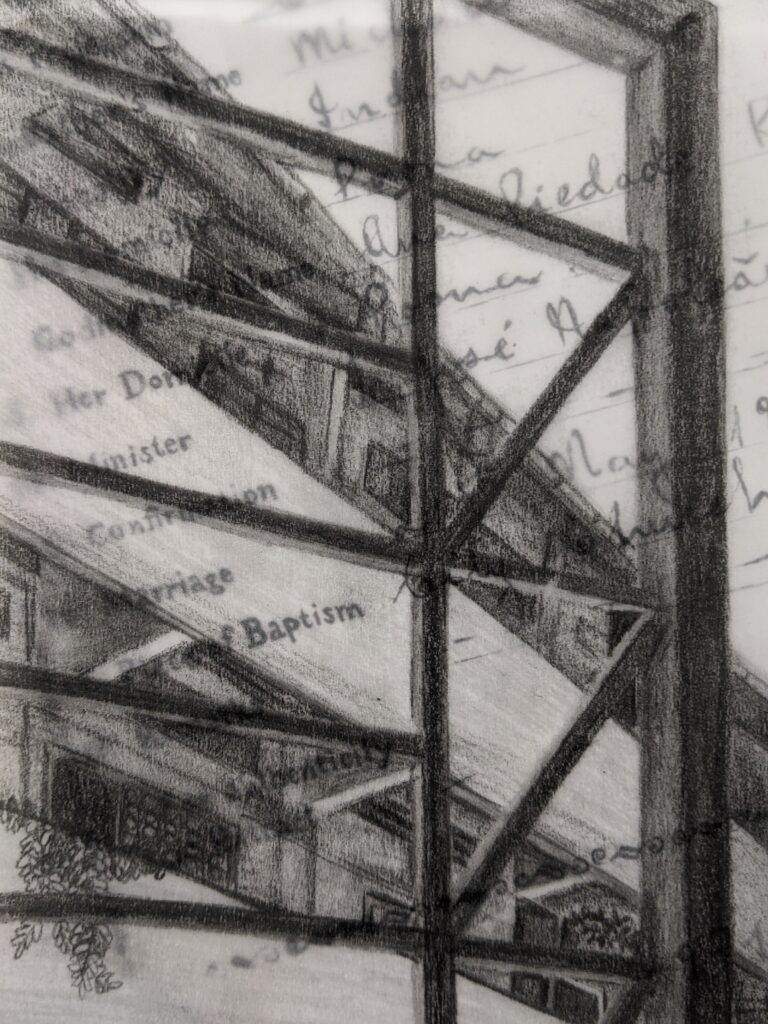
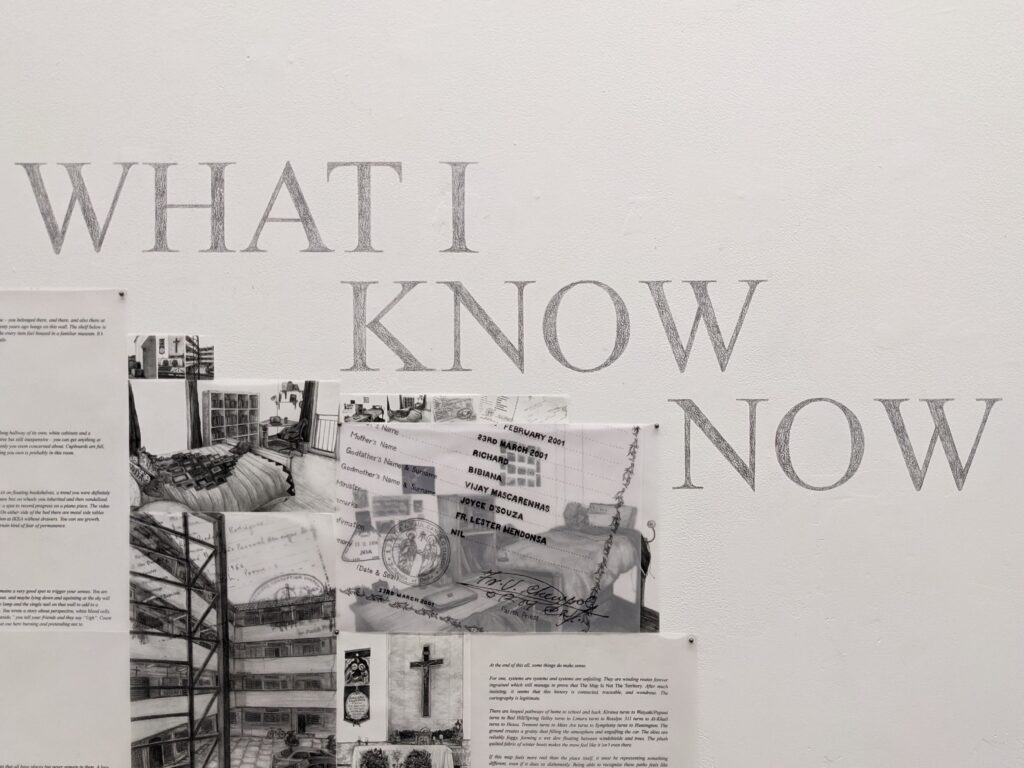
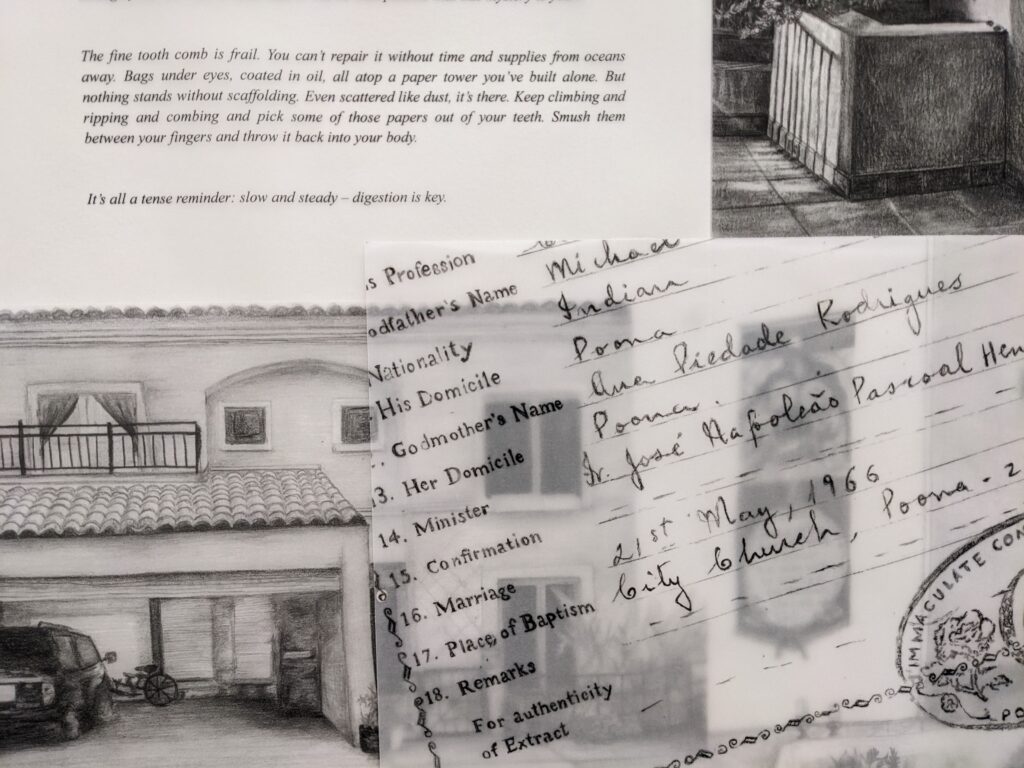
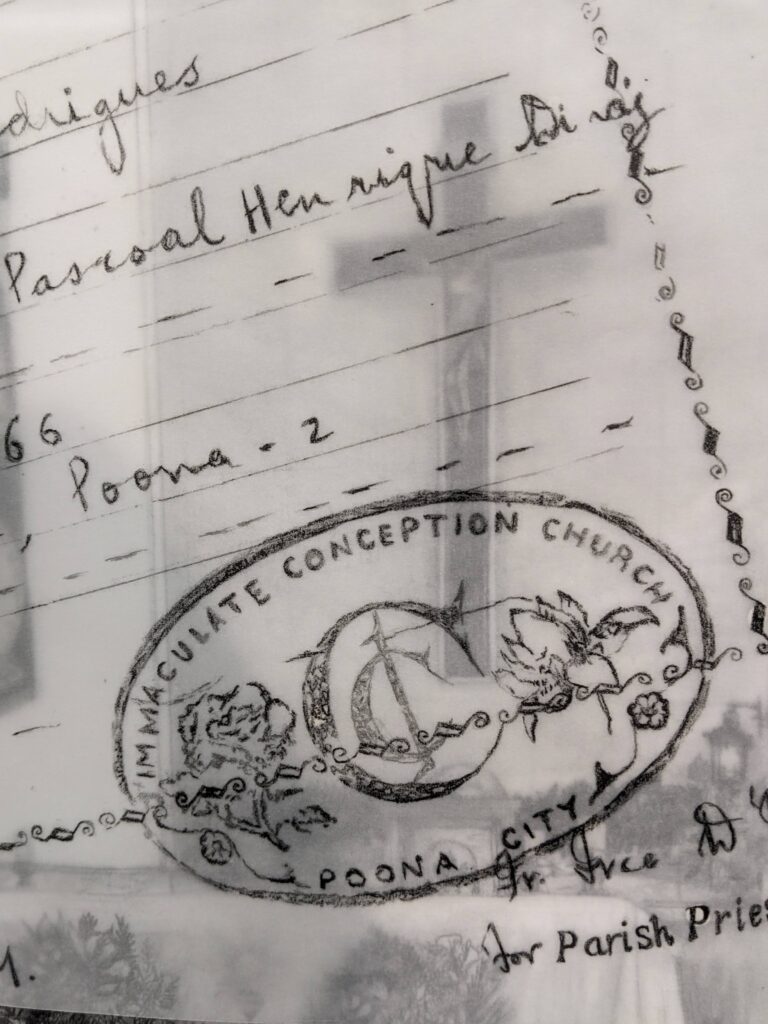
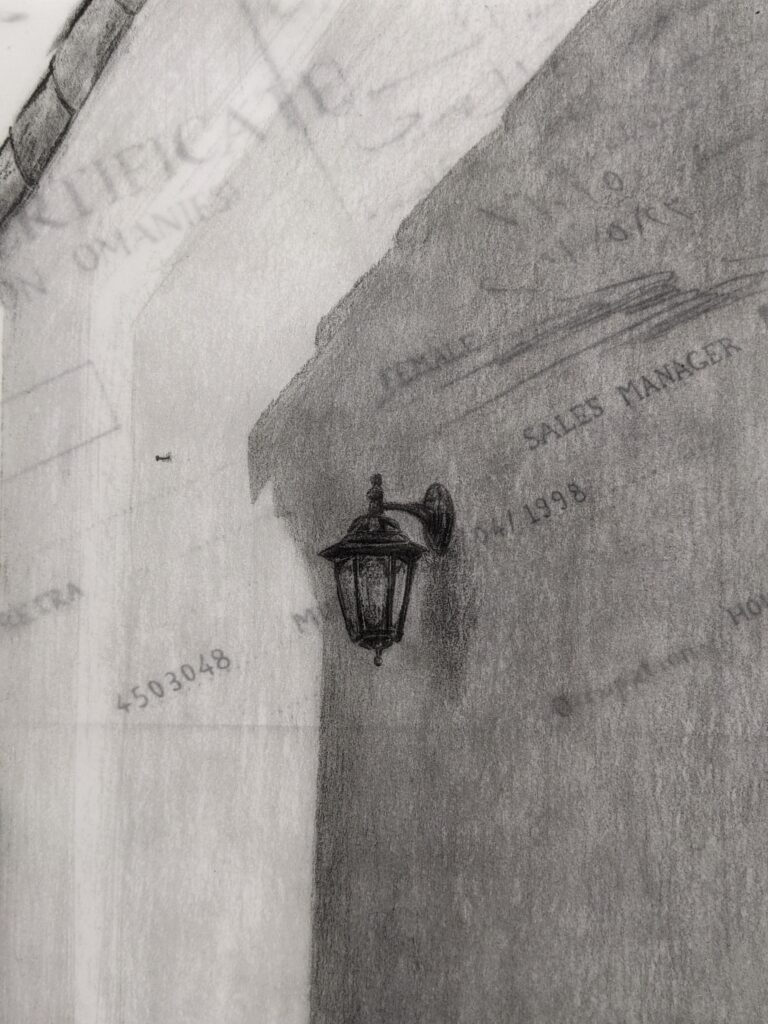
The Essays
There are three creative nonfiction pieces embedded within the project. The first describes the process of sorting through paperwork and documentation through the extended metaphor of paper’s materiality. It explores how something so fragile and temporary often holds the most important information. The second essay explores what a home looks like through a fragmented discussion that mirrors what it feels like to move between places. It’s nostalgic and liminal – time falls away. The final essay uses an auto-conceptual framework to explain how the information I have gathered up to this point comes together to create an ever-changing map that is inaccurate and incomplete by satisfying nonetheless in how it represents the different facets of my own identity.
Read them here:
Paper
A fine tooth comb smoothes over papers, flattening curvatures of time and scratching away ink that was invented here. Over and over again, looking for traces of pixie dust in the form of shredded A4. Hoping for something, anything, to inhale and digest. This is a child in a sandbox believing they have discovered the dinosaurs.
See fights over soil and stamps. A technicality, deciding who owns what, when, and where. Read closer and finer and there you find a sentiment which marks the future: they will have to die before you are involved. Is it ignorance or cognition, to feel like you are the big bang?
Papers become frailer and the oil from your fingertips suddenly feels personal. Brush away the residue of relatives to find graphite granules: place them under a microscope. Calloused fingertips scrape across the ridges of plastic dials, moving through the motions of then and now until finally, a scripture is revealed. But of course, you cannot read it.
How do you find magic in misunderstood material, built by you but inscribed in their language? The fine tooth comb brushes hair from your ears to let in the sound of memory’s fragility. Hands move through the air, catching on more paper to shove into your head. It’s uncomfortable, ears full of distorted information, bloated like a dumb doll. You illiterate disparate descendent – hope will not wait up.
How much is even visible? You sit here, after combing through every scrap fallen from above after hitting the fan, left with handfuls of precious, expensive fluff. Shove this all into an open mouth and it becomes clear why paper is so temporary. Hold it in, fibrous constellations within you, thinking maybe one day the swallowed ink will bleed back through your skin and at least then it will be indisputable that this mystery is yours.
The fine tooth comb is frail. You can’t repair it without time and supplies from oceans away. Bags under eyes, coated in oil, all atop a paper tower you’ve built alone. But nothing stands without scaffolding. Even scattered like dust, it’s there. Keep climbing and ripping and combing and pick some of those papers out of your teeth. Smush them between your fingers and throw it back into your body.
It’s all a tense reminder: slow and steady – digestion is key.
This Place
This place is grounded.
Everything in its place. Objects build a timeline – you belonged there, and there, and also there at one point. A landscape your father painted twenty years ago hangs on this wall. The shelf below is carefully curated, string lights installed to make every item feel housed in a familiar museum. It’s obvious that everyone here has an eye for details.
What do you see?
- There are no flags on the walls.
What do you hear?
2. Parrots.
What is that feeling in your fingers?
3. Cold air.
The kitchen is central even though it’s not. A long hallway of its own, white cabinets and a handpicked backsplash. The tiles were expensive but still inexpensive – you can get anything at DragonMart. The swinging door is a hazard only you seem concerned about. Cupboards are full, brimming, with things that last. The oldest thing you own is probably in this room.
What is the time?
4. The clock in here is five minutes fast.
Over here, history is temporary. Some books sit on floating bookshelves, a trend you were definitely into before anyone else. The rest live in a square box on wheels you inherited and then vandalized. A phone fits perfectly into one of the corners: a spot to record progress on a piano piece. The video
picks up every creak from the 2001 Yamaha. On either side of the bed there are metal side tables chosen because they were the only white option at IKEA without drawers. You can see growth, which is terrifying and special. There is a certain kind of fear of permanence.
When did you paint those canvases?
5. Midnight, with fumes in the air.
What’s the best thing here?
6. The desk.
Outside, it is hot. The floor is boiling but remains a very good spot to trigger your senses. You are somehow so alert while also dripping in sweat, and maybe lying down and squinting at the sky will slow things down. Take another photo of the lamp and the single nail on that wall to add to a collection of photos which mean everything. You wrote a story about perspective, white blood cells, and capillaries out here. “It’s 42 degrees outside,” you tell your friends and they say “Ugh”. Count how many moments and minutes you have sat out here burning and pretending not to.
Why did you do that?
7. Terraces are nostalgic.
What do you see, here?
8. Trees. And flowers.
Who lived here before?
9. What?
Who lived here before?
10. Oh.
You don’t know?
11. No.
The next room is the messiest. Full of things that all have places but never remain in them. A lace mask from a vendor in Venice sits next to a plaster-of-paris one you don’t remember the origin of. A carpet from a bus tour in Turkey. Another painting. Tucked in a corner is a makeshift studio desk: it’s a plank of wood on top of two shelves you got for free. A colour wheel from the Golden Acrylics Colour Theory set is stuck on the wall to cover up the electrical box. There’s a lamp that blows out every single lightbulb it houses. There aren’t enough chairs for everyone because you couldn’t find a couch that fit with the industrial sewing machine. It’s twelve feet long and worth every inch.
Do you love it here?
12. Yes.
It is impossible to feel uncentered when you see a place like this. Skepticism and negativity get attached to things that move instead. You don’t blame a house because they don’t last. And conveniently, they don’t move either.
What?
13. Space is objective.
You’ll keep coming back. At this moment, no one is actually here. Imagine an empty space with empty silences, except for the parrots. Someone is probably watering the plants, checking on the garden, making sure there’ll be food in the fridge when everyone returns. This place is here, even when it won’t be. That tree will be visible from outside your window. The ground on the terrace will continue to scorch feet and backs. And you will return and stay and go and recollect it all.
Does that make sense?
14. Yeah. That’s okay.
What’s In A Map?
At the end of this all, some things do make sense.
For one, systems are systems and systems are unfailing. They are winding routes forever ingrained which still manage to prove that The Map Is Not The Territory. After much insisting, it seems that this history is connected, traceable, and wondrous. The cartography is legitimate.
There are looped pathways of home to school and back. Kirawa turns to Waiyaki/Peponi turns to Red Hill/Spring Valley turns to Limuru turns to Rosslyn. 311 turns to Al-Khail turns to Hessa. Tremont turns to Mass Ave turns to Symphony turns to Huntington. The ground creates a grainy dust filling the atmosphere and engulfing the car. The skies are reliably foggy, forming a wet dew floating between windshields and trees. The plush quilted fabric of winter boots makes the snow feel like it isn’t even there.
If this map feels more real than the place itself, it must be representing something different, even if it does so dishonestly. Being able to recognize these paths feels like proof of existence and permanence – an antithesis of the documentation which permits access. Involvement, it seems, is an expensive ticking bomb in an eternally binding game. But what would it look like to composite and visualize these tracks, to represent them as a specific but not unique amalgamation? It might feel fair, but at the cost of omission: a lullaby titled All Models Are Wrong.
And yet, it would be special – Some Are Useful. Research routines have built upon each other to create this point in time and maybe there’s something to be said for stopping to recognize that. Take a look at the role memory played in getting here.
These are fragments of unmarked pathways. The walk from Tatya Tope to the glasses store to the shopping center with strange gaps in the pavement. Throwing sand at each other in an empty lot between houses. The trek down apartment stairs to a road to a playground made of wood. The hike up a hill with a too-heavy basketball, full of stubborn insistence. A terrace with a lamp and a nail in the wall. The front row seat to a ceremony followed by the view outwards from the door of a short-lived home. It feels like a ghost seeing warped views of bedrooms and desks, understanding them as snippets of life lived in sections.
This is a map of its own, an unbalanced and valuable recollection of what it means to have insisted on existence despite regulations. A new definition, a certain compilation. Built with the intention of representing the now, knowing that it will be different tomorrow because none of these documents and memories are locked in place. They’ve all been steeped in generations of story, and will change. This is temporary. This is information well revered.
This is what I know now.

